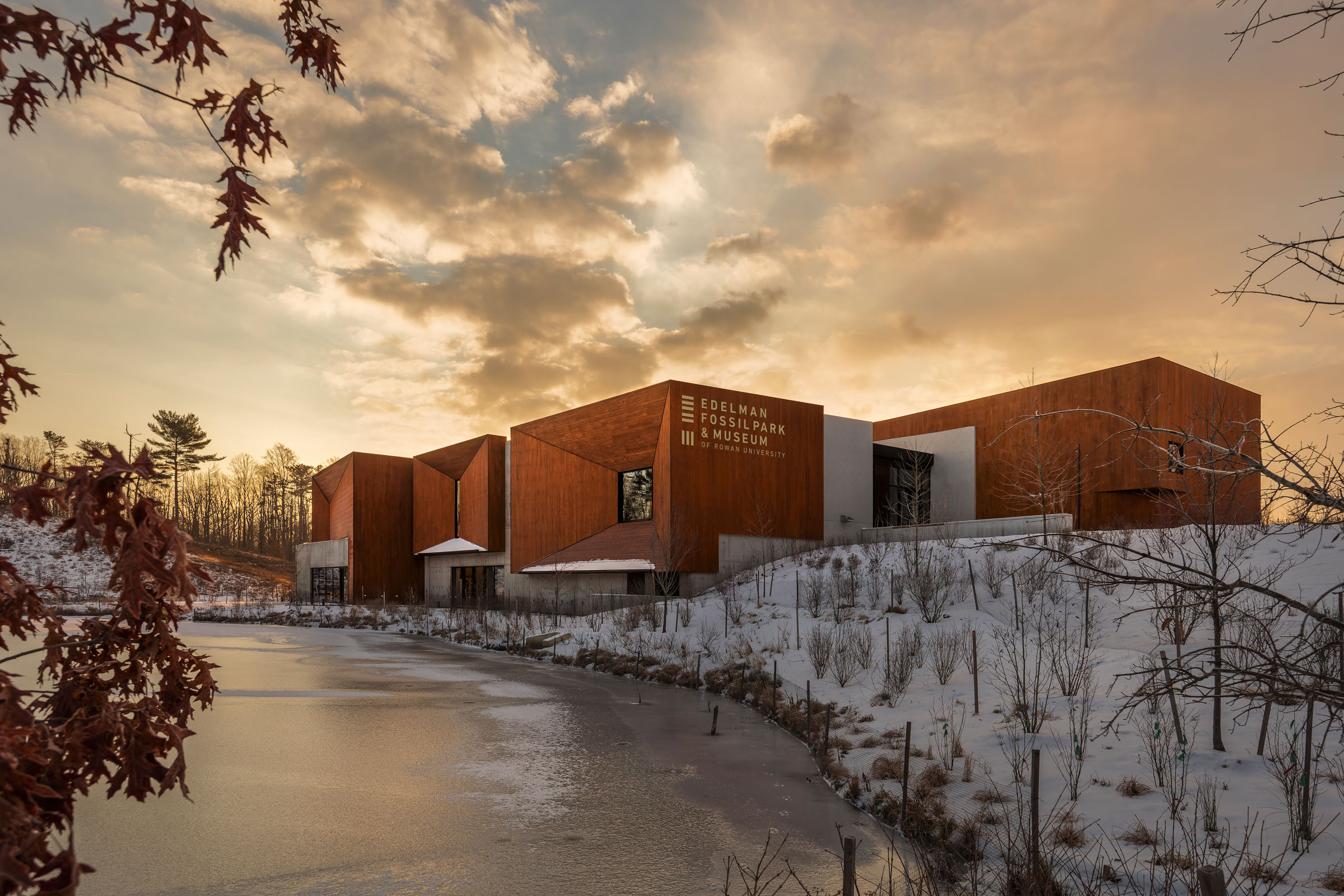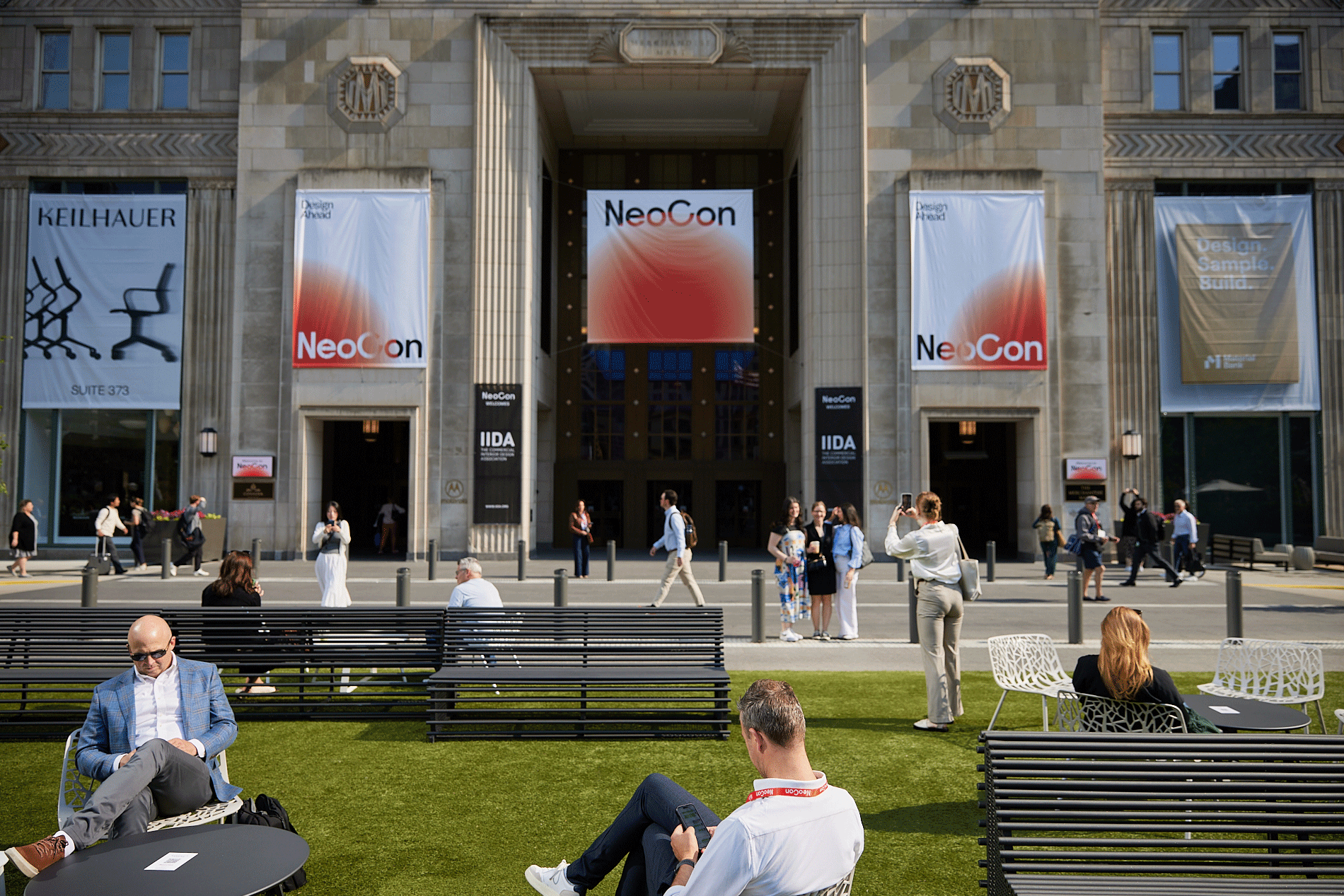Story at a glance:
- Architects and designers share how they designed a museum in New Jersey with a special role in educating people around climate change.
- Edelman Fossil Park was designed to be one of the state’s largest public net-zero carbon emissions buildings and meet the Living Building Challenge.
- Mass timber construction contributes to lower embodied carbon, while bird-friendly glass and regenerative landscape strategies support local ecology and biodiversity.
Museums exist outside the formal structures we usually look to for information and learning, like schools or the news media. They enter our lives in a way that’s personal and communal; family trips, visits with friends, and even school trips to museums are a world away from the classroom.
But that doesn’t make them any less powerful as a tool for education. In fact, with the right architecture and experience design, museums can provide the kind of informal learning environment that can play a critical role in informing the public on a range of topics and issues.
Take climate change and sustainability—two topics that have faced resistance in recent times due to misinformation and a lack of trust. Museums offer a way to bridge those gaps. Where traditional educational frameworks have broken down with mistrust, studies show people trust museums second only to their friends and family.
Every part of the museum’s building can be a living example of a sustainability story, too. That’s why we talk about them as narrative spaces—physical spaces embedded with stories. The relationship this creates with the visitor is deeply intuitive, tapping into a tradition that is as old as cave paintings.
The facts and information we pick up at museums are blended with the memories of taking a trip, being together, having discussions, walking around, eating a snack, and more. Because of this they resonate more deeply. These emotional and communal qualities of a museum experience not only inform but can drive visitors to act on the information they absorb, so long as they are designed to provide tangible opportunities to take action.
Working together, designers and architects can foster climate action by crafting spaces where every part of the built environment is enriched by a sustainability story and message. And there is possibly no greater example of this in practice than the newly opened Edelman Fossil Park.
The Mission of Edelman Fossil Park
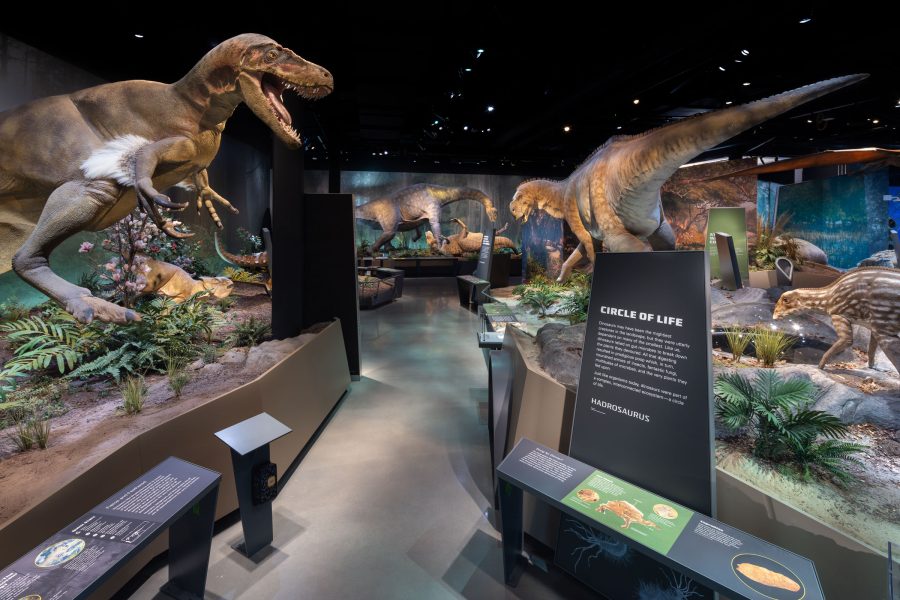
Photo by Brett Beyer, courtesy of G&A
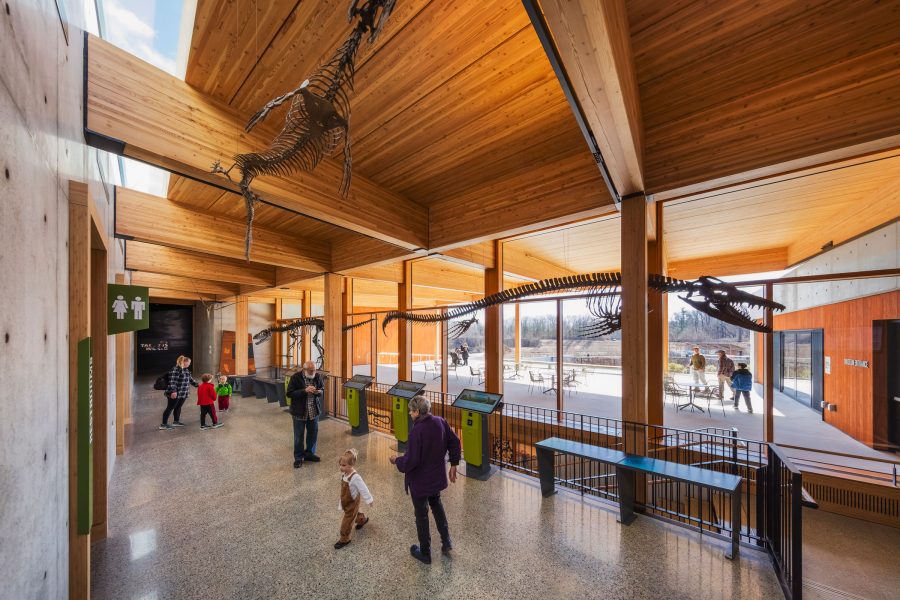
Photo by Jeff Goldberg, courtesy of G&A
Among a suburban landscape in New Jersey you’ll find a striking timber-clad building atop a ridge that overlooks a decommissioned quarry. The 44,000-square-foot Edelman Fossil Park and Museum sits on a 123-acre campus that includes walking trails, a large adventure playground, and an active dinosaur dig where visitors can search for fossils.
Spearheaded by the museum’s visionary executive director, Kenneth Lacovara, the initial mission of the project was multifaceted. The museum needed to be a welcoming destination serving visitors of all ages with engaging exhibitions and experiences, as well as a highly efficient building living up to the climate-focused mission of the Fossil Park. But most critically it needed to be a single unified expression of the Fossil Park as an institution—a holistic experience demonstrating the relentless commitment of the institution and its founders to their mission.
This vision for the Fossil Park is rooted in its signature quarry and in the idea of public engagement. More than a decade before founding the museum, Lacovara—a world-renowned paleontologist and scientist—began organizing community dig days at the quarry site where the public could come and dig in the giant fossil-rich hole in the ground.
In addition to being a great place for practicing citizen science, the site turned out to be scientifically significant. It contains both fossil and mineral evidence of the day, 66 million years ago, when an asteroid collided with the planet and caused Earth’s fifth mass extinction event, killing 75% of all species, including the dinosaurs.
The concept of building a museum at this dig site arose from this serendipity, presenting an opportunity for visitors to learn about dinosaurs and the close connections between every living thing on Earth while also building hope for the future by taking action on climate change.
To meet this challenge the collaborators’ design team—including our experience design team at G&A, the design architects at Ennead, and executive architects at KSS,—moved to tightly integrate their diverse practices around Lacovara ‘s vision of sustainable storytelling to develop shared conceptual design approaches.
How We Did It
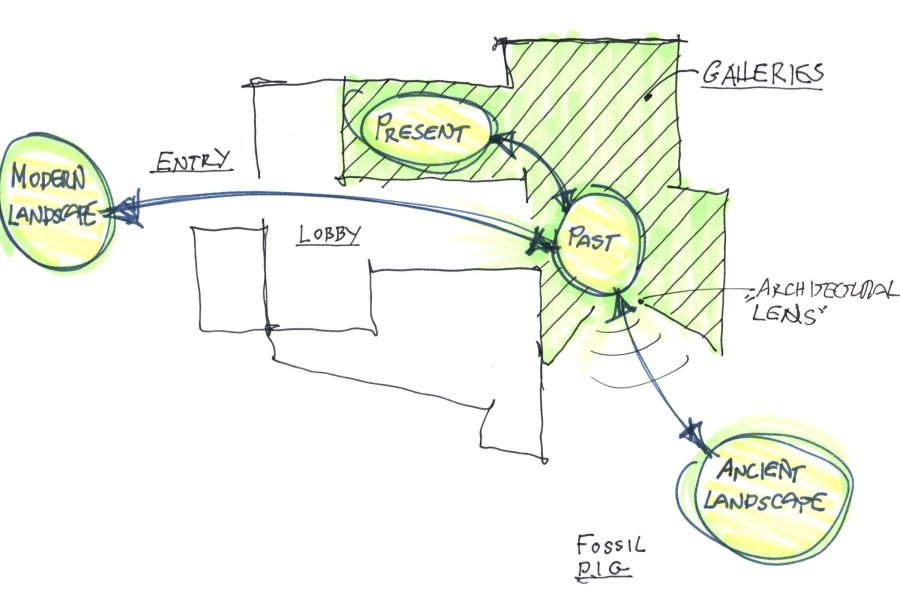
Drawing courtesy of G&A
Building off of the profound vision and spirit of the place, the design team identified four fundamental elements of a shared conceptual approach to the overall visitor experience: nature, climate, storytelling, and design. A simple visitor-centered concept emerged that shows how nature, across the entire timespan of Earth’s history, is connected to the moment we’re in now and the climate challenge we face.
With this framework in mind, the architecture was envisioned as a set of metaphorical camera obscuras, an apparatus in which a tiny aperture offers a view to a realm beyond. A series of small-scale pavilions look out to the quarry with its fossils and geological layers that take us back to the ancient past. The pavilions act as lenses framing the quarry and the evidence of the past while encouraging engagement with the present moment. In this way the architecture both admires the natural landscape and nestles within it.
If the architecture is a camera and a set of lenses looking out to past worlds, then the exhibition design becomes the picture the camera sees, taking visitors on an interactive journey to the present day. Starting outside and then moving through the architecture and the exhibits, visitors loop through time until they wind up back in the present day with a deeper understanding of climate change and how we got to our current crisis. Every design decision, from the RFID fossil scavenger hunt to the VR experience to the depictions of the fifth and possible sixth extinction events, is anchored by the mission to make the experience personal. In this way visitors walk away feeling a connection—to the Cretaceous past, to their own present, or to an ever-forming future. By both confronting visitors with uncomfortable truths and carefully layering information, the experience design encourages people to engage on any level and inform a new perspective.
From Holistic Design to High-Performance Building
Naturally this same holistic approach extends to the building’s own sustainability features.
The building is designed to be one of New Jersey’s largest public net-zero carbon emissions buildings and follows the rigorous sustainability goals of the Living Building Challenge. The design incorporates geothermal wells for heating and cooling, an all-electric mechanical system, and a high-performance envelope to reduce energy demand. The building is photovoltaic-ready, allowing for future onsite solar energy production.
Mass timber construction contributes to lower embodied carbon, while bird-friendly glass and regenerative landscape strategies support local ecology and biodiversity. Through passive and active design measures, the project reflects the Fossil Park’s commitment to advancing scientific literacy and sustainability through direct public engagement.
An Activated Community
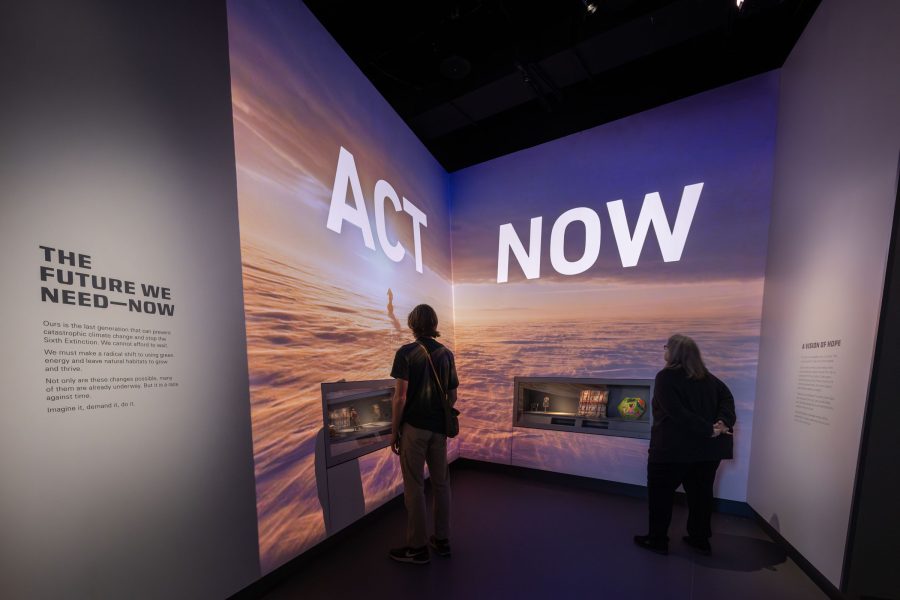
Photo by Brett Beyer, courtesy of G&A
In its first few weeks of opening the Fossil Park has already had more than 10,000 visitors and 1,600 members join. And the visitor response has been outstanding, with visitors indicating a net promoter score of 76 in surveys, placing the experience in the realm of world-class attractions.
More than that, Edelman Fossil Park & Museum succeeds as a great example of unified, sustainability storytelling that, through collaborative architecture and design, inspires climate action and truly lives out its sustainable mission at all levels of the construction of the experience.

